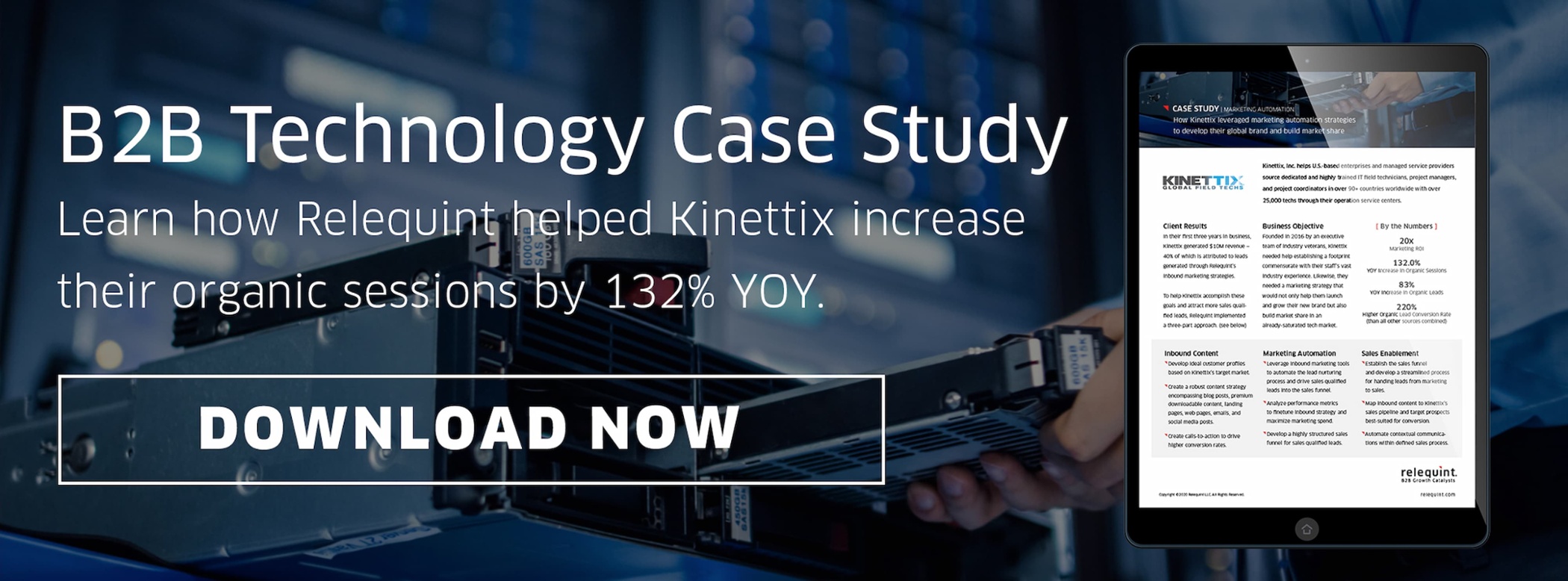 With account-based marketing (ABM), businesses leverage personalization to convert specific, high-priority accounts, rather than marketing to large groups at once. These targeted accounts tend to have a larger ROI than non-ABM accounts.
With account-based marketing (ABM), businesses leverage personalization to convert specific, high-priority accounts, rather than marketing to large groups at once. These targeted accounts tend to have a larger ROI than non-ABM accounts.
ABM strategies work particularly well for B2B technology companies that have long sales cycles, as they focus on relationship-building and customization. They allow businesses to weed out the companies that will not benefit as much from their products and services early on and focus on the best fits, increasing efficiency.
The Benefits of Account-Based Marketing
We already know that marketing personalization can transform what may seem like a cold, cookie-cutter message into an individual human exchange. Customers appreciate the high-degree of customization this approach offers. They feel as though your company is reaching out to them specifically to offer services and help them with their pain point. This encourages their engagement and interest in the brand.
By using marketing personalization along with ABM, you’re sending highly targeted marketing messages to decision makers from the companies that are most likely to close. As a result, this strategy can lead to higher conversion rates.
Likewise, since you’ve done your research and already know which companies are the best fit, you’re more likely to close larger deals. In fact, a survey by SiriusDecisions found that 91 percent of marketers reported larger-sized deals from their ABM accounts than their non-ABM accounts. A quarter of those respondents also reported that the deals were at least 50 percent larger.
ABM also offers a high degree of cost-efficiency. Since the marketing team isn’t wasting time and resources targeting accounts that don’t fit the profile well, you keep your resources focused on the brands most likely to convert and become long-term customers.
ABM Best Practices
Now that it’s clear why ABM has become such a critical part of modern marketing, particularly in the B2B space, let’s explore some best practices. Seeing how B2B technology and marketing automation tools drive this strategy forward can help businesses take advantage of the wealth of benefits.
Aligns sales and marketing closely
The first step is aligning the sales and marketing teams closely. Although speaking about the importance of alignment has become a popular topic, ABM will not work properly unless this becomes a reality.
The two teams should have transparent and open communication between them so that everyone can see how the account progresses and their role in the process. The history of the account should have such quality documentation that even if someone new starts managing the account at a later date, they will easily see and understand the history behind the relationship.
Sales and marketing should discuss and answer questions together related to:
- The best content for engaging this account
- The best channels to engage this account
- When to engage stakeholders for the account
- The goals of each team, their budget, and what they view as the priorities for engaging the prospect.
Identify the targeted accounts
Once the teams have prepared themselves to work together, the next step involves identifying the targeted accounts. You want to target the accounts with the best fit for the company that also offer the best value as a customer.
Look first at your CRM to identify high-value companies that would be a good fit but don't yet have a deal signed with you yet.
Next, consider if your business model and product or service work particularly well for organizations in a particular industry, region, or size. This will be a bit more specific than your general buyer persona, as you want to find the optimal fits for your business and identify the companies that can bring the best possible value.
Maintain a consistent, high-quality customer experience for the long term
To target these identified businesses, you want to remember that you will not get a conversion right away. This process will take some time and nurturing. The reward, however, can be a high-value, long-term account that pays off for years to come.
Maintain consistency in the customization and the messaging you offer this customer. Regardless of whom they receive the information from — marketing, sales, customer service, or another department — you want them to receive consistent messaging.
Make use of B2B technology, like marketing automation, to help you reach this particular customer at precisely the right moment with the best content for their needs. Help the account see that you value them personally as a prospective customer.
Measure results
As you progress through your ABM implementation, remember that measuring results will play a critical role. As you flesh out your strategy, make sure that it offers a comparative benefit for your organization. Track key performance indicators (KPIs) such as:
- Your success rate.
- The conversion rates of ABM accounts compared to non-ABM accounts.
- The size of the deal of ABM accounts versus non-ABM accounts.
- How long the ABM accounts remain customers.
This will help you gain a better picture regarding your success with the strategy and where your business might need to improve moving forward, further boosting your efficiency.
Automating Your Account-Based Marketing Strategy
The research and performance monitoring that goes along with ABM may seem like a lot of work — but marketing automation tools can help streamline this process.
Yes, you should still craft messages that are personalized to each of your ABM targets, which will take time. However, leveraging additional features like personalization tokens or merge fields can help you further personalize your communications without any additional leg work. For example, try creating a token that imports the target’s company name into the message, so they feel like you’re speaking more directly to them.
You can also use marketing automation to monitor analytics and real-time and run A/B tests that help you communicate with targets more effectively.
Finally, consider using your marketing automation platform to create workflows that nurture your ABM targets when they take certain actions. For example, if you send them an outreach email and they go download a case study or whitepaper from your site, you can create a workflow that automatically follows up with them about the piece of advanced content. For an even more personalized approach, you can build out a workflow that triggers a task reminding the sales team to call the target a few days after they download that particular asset. As a result of these automated workflows, leads are constantly being engaged and your sales team can close more deals.
Account-based marketing offers B2B technology companies considerable benefits and opportunities to better engage their customers. Those considering employing it in their own organizations should review these ideas and best practices so they can seize these opportunities to thrive.![]()







 By
By 
